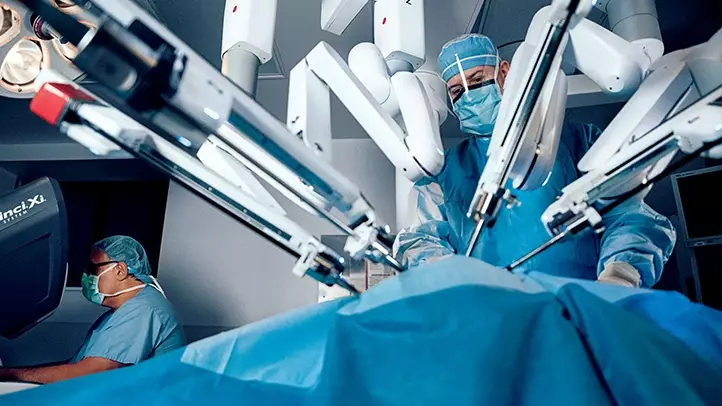Blog

What is Robotic hernia surgery?
What are the advantages of using a robot for hernia surgery?
The robotic assistant has multiple arms, each with multiple joints which allow for the instruments to work at various angles. The advantage being, unlike a human arm, the robotic arm is able to maintain its position at various angles for sustained periods of time with great ease. The camera of the robotic assistant provides stable vision and has higher resolution 3D vision and magnification compared to conventional laparoscopic cameras. By a process called motion scaling, fine movements can be performed by the surgeon through the console. All these advantages allow the surgeon to perform complex Manoeuvres with great ease. Ease in performing complex techniques reduces the time required for the surgery, helping in faster recovery.
Is Robotic hernia surgery effective?
What are the special complications because of Robotic hernia surgery?
There are no special complications unique to robotic surgery. The potential complications of the procedure will be briefed to you prior to surgery by your surgeon and Anesthesiologist.
How long is the recovery time after Robotic hernia surgery ?
What is the cost of Robotic surgery ?
The cost of robotic surgery is marginally higher when compared to conventional minimal access surgery. The increased cost is due to the usage of the single-use instruments which ensure 100% sterility. The cost of these instruments is often offset by the cost saved by reduced length of stay.
Does experience of the surgeon matter ?
How painful is robotic hernia surgery?
Pain after robotic surgery can be successfully managed by injections and tablets. Experienced Anaesthesiologists and pain management specialists are part of the multi-disciplinary team at the Institutes of Hernia surgery and Abdominal wall reconstruction, Apollo Hospitals to manage pain during and after surgery.

